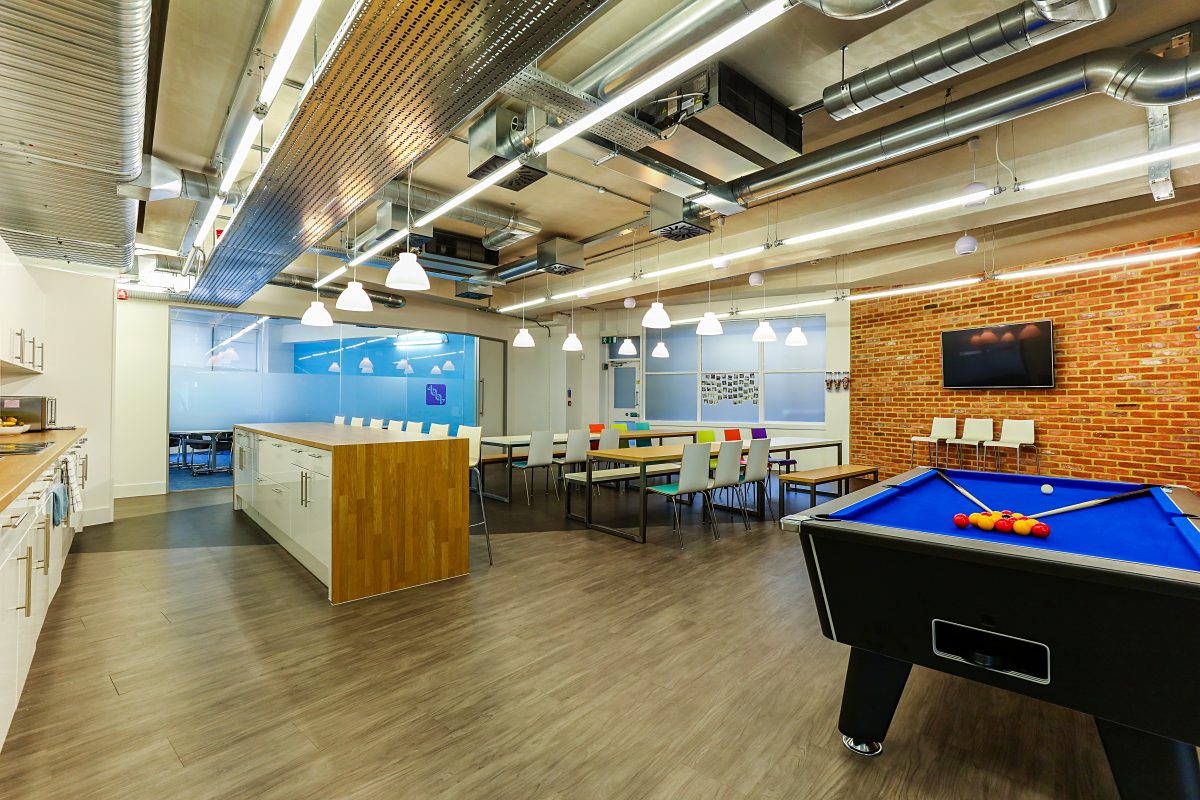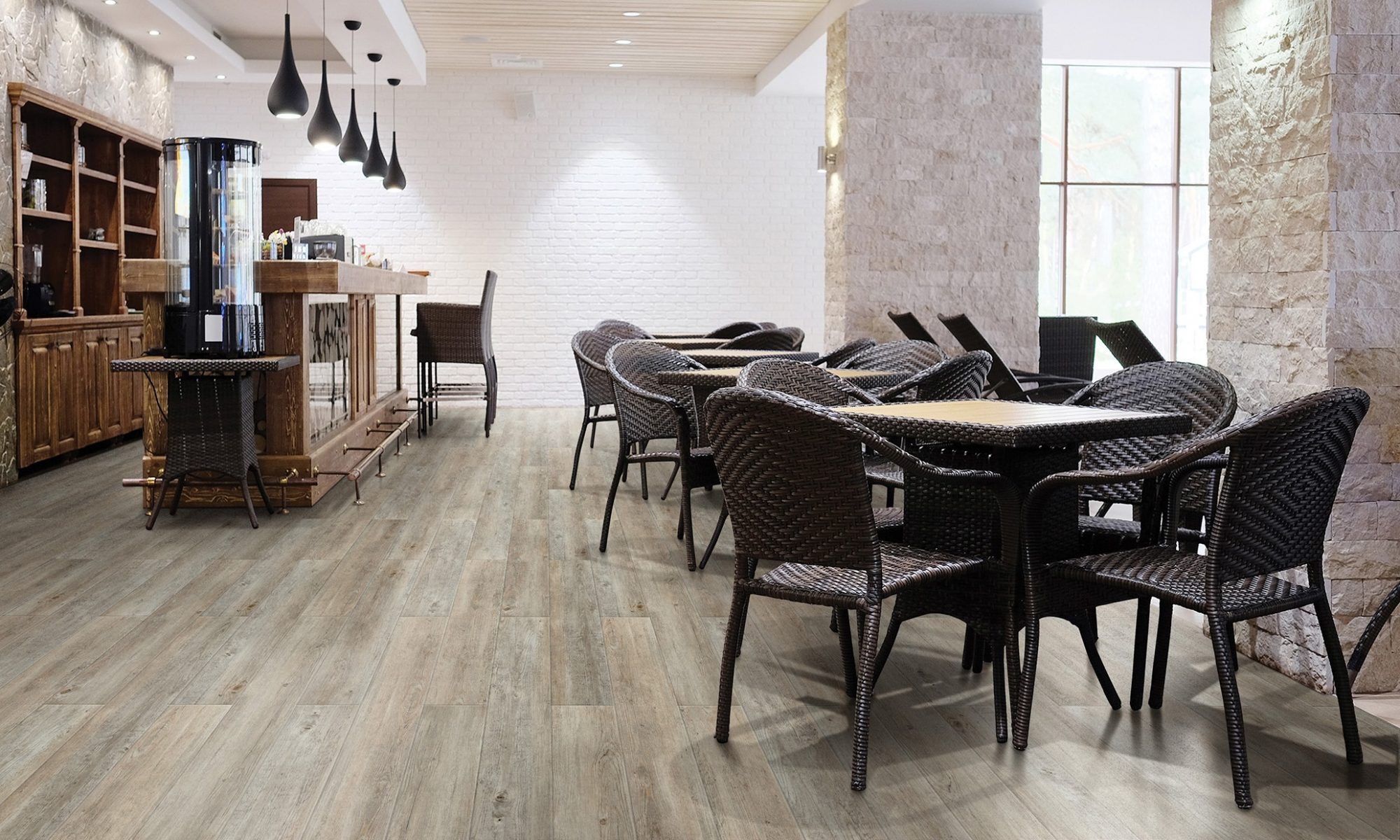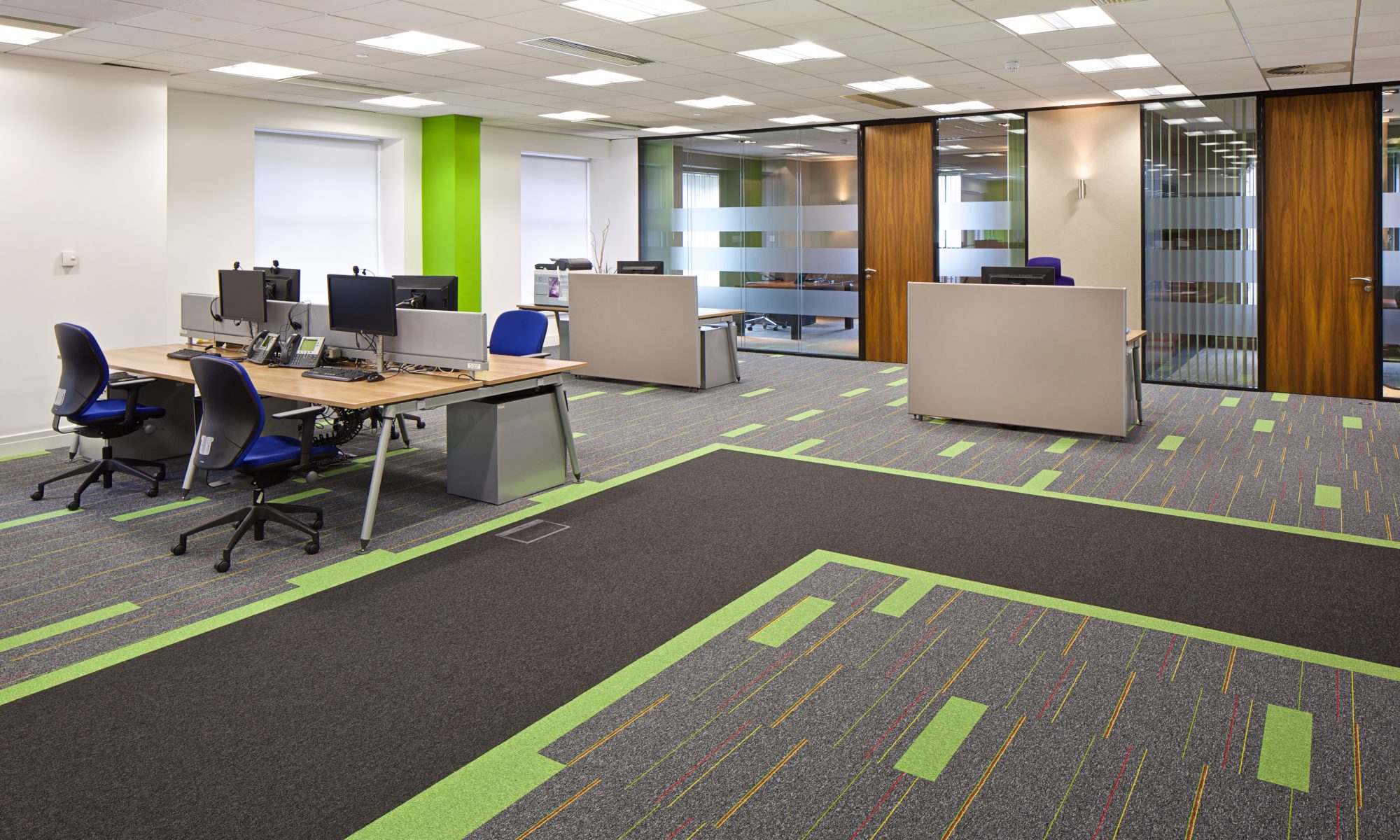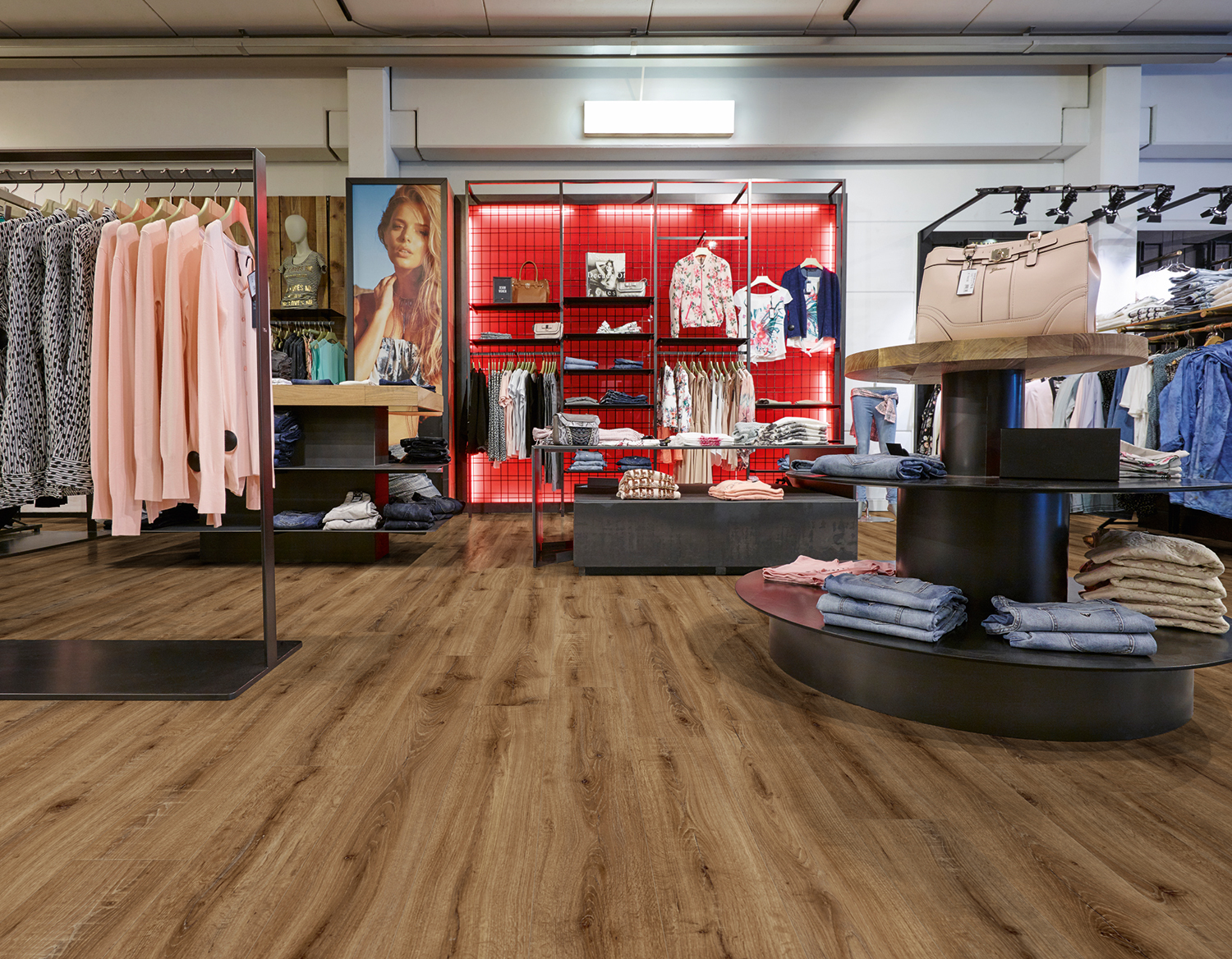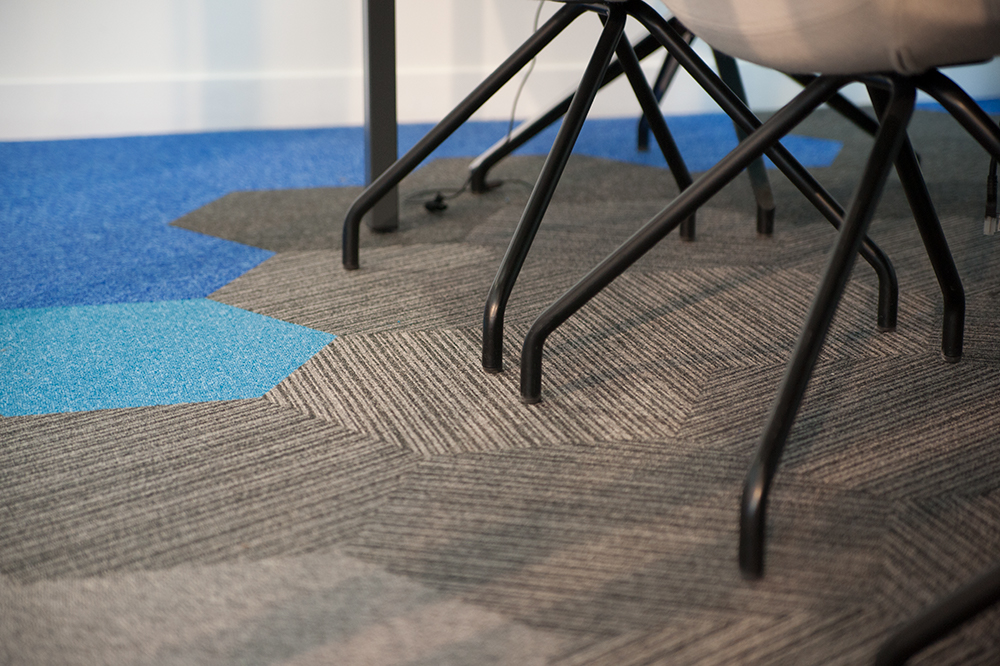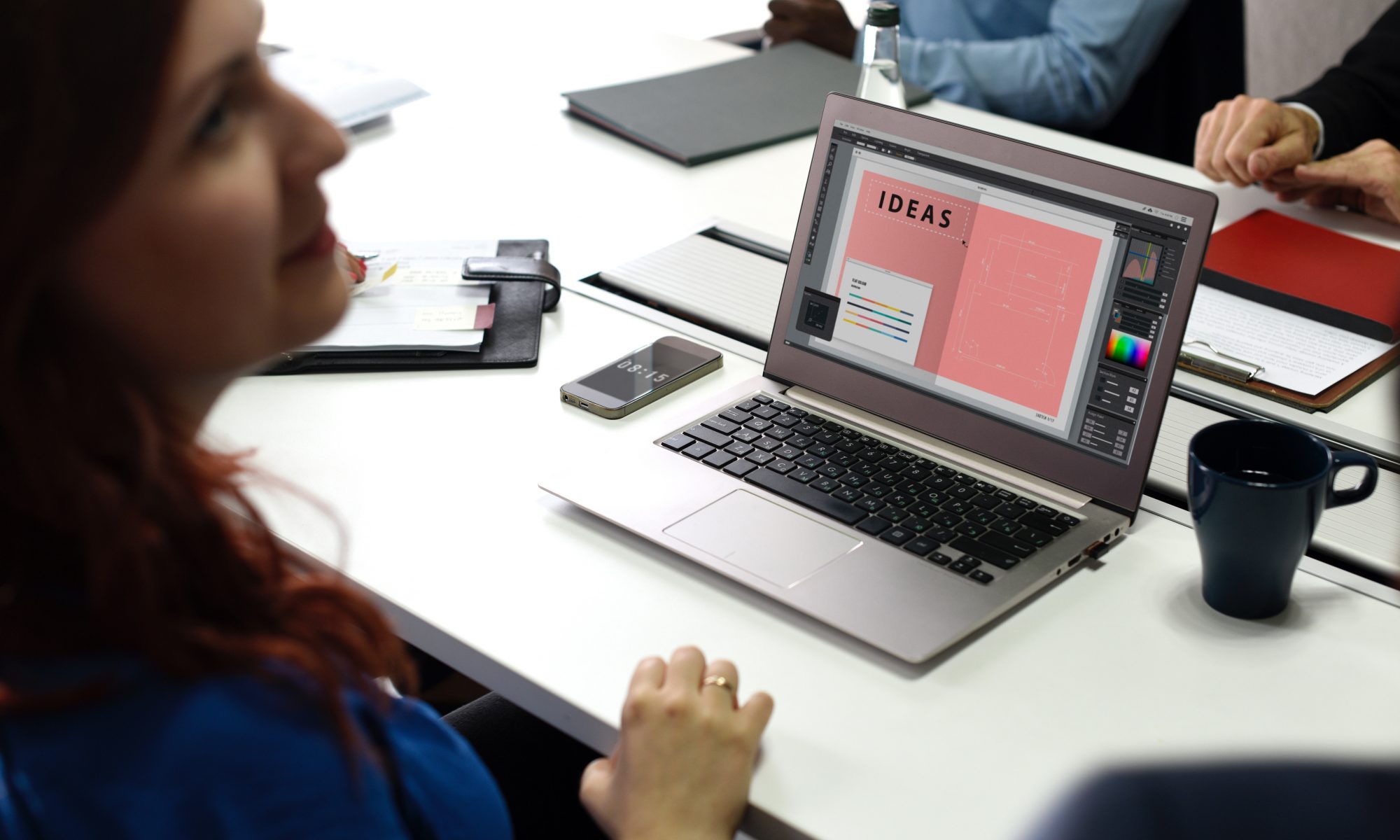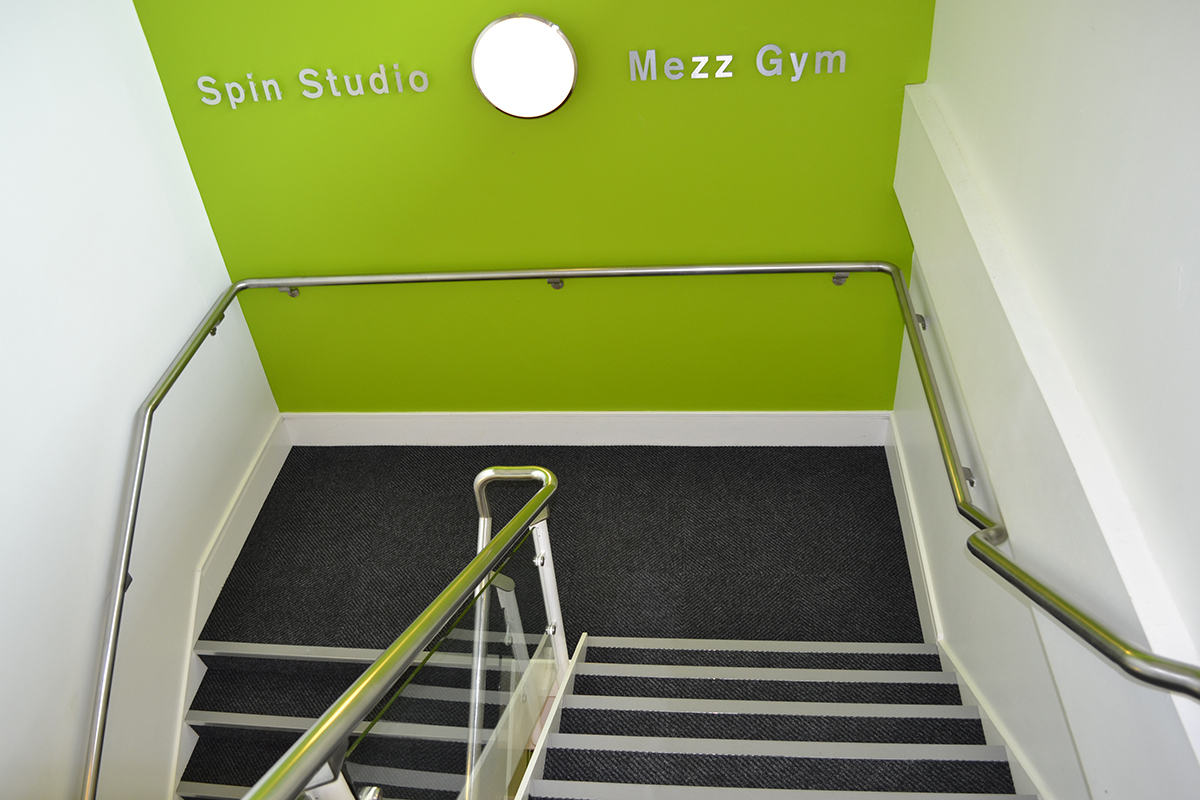The corporate office is changing from a dull, uninspiring space into a fun work environment where collaboration and creativity are encouraged. Here are some of the top trends… we are pleased to see just how much our clients have incorporated them.
Big companies like Apple, Google and Pixar are leading the way in creating fun workplaces that staff can engage with and enjoy being in. Though free smoothies, climbing walls and tunnel slides may be a bit out of your budget, there are things designers, project managers and office managers can take from these companies and introduce into their own workspace. We’ve looked at some of the most popular office design trends in 2018 and how you can incorporate aspects of them into your office design. We also take a look at the recent case studies we have been involved in that truly reflect these trends and just how great our clients are at showcasing them.
Open-plan collaboration areas
Many companies promote the idea that the best work is done collaboratively, and they have created large open-plan areas where people can work together. This idea can be used in your office by creating designated co-working spaces, with room for groups of people to gather and discuss group projects. Making sure these areas are accessible and visible encourages others to get involved and solve problems creatively. See our case study for a great example.
Industrial aesthetic
Designers have been loving the industrial space aesthetic, reminiscent of old warehouses and factories. From exposed brickwork to graffiti artworks to pendant lighting, this look feels edgy and dynamic. Look at introducing the industrial look with smooth and sleek commercial flooring choices, brick effect wallpaper or faux concrete and lots of angle poised lamps. Check out this really great example.
Unconventional spaces
There has been a rise in the weird and the wonderful when it comes to office spaces, from old subway cars to garden sheds. Incorporating an unusual feature into your office space can give your space a creative edge, a fun place to be and make your office stand out in the memories of clients and visitors. We loved the bicycles on the wall from one of our clients, a great example of how reception space can be used to showcase brand values.
Meeting pods
Meeting pods are another trend that is making a big impact in offices around the world. These practical pod-like structures allow people to have private meetings and schedule appointments in a space that’s still part of the main office. There’s a variety of designs of meeting pods being used; some are like restaurant booths, while others are like private study spaces in libraries. With features like acoustic engineering, glass walls, lockable doors and space for laptops and office chairs, the meeting pod is being seen more and more. We have another really cool case study that illustrates this.
Breakout spaces
The breakout space is a huge trend in office design in 2018. Employees have recognised that sometimes a break from a project can be just what’s needed for clear thinking and motivation and they’ve been integrating spaces that allow for this. Far removed from the traditional uninspired lunch canteen, these spaces have yoga mats, games consoles and beanbags to allow staff to take a break and recharge. If that seems a bit extreme, think about making your current break space more comfortable and relaxing and being more flexible on break times to allow staff to give their best performance after a break. See this excellent example of a great breakout area it has it all – bike on the wall, pool table and industrial look.
